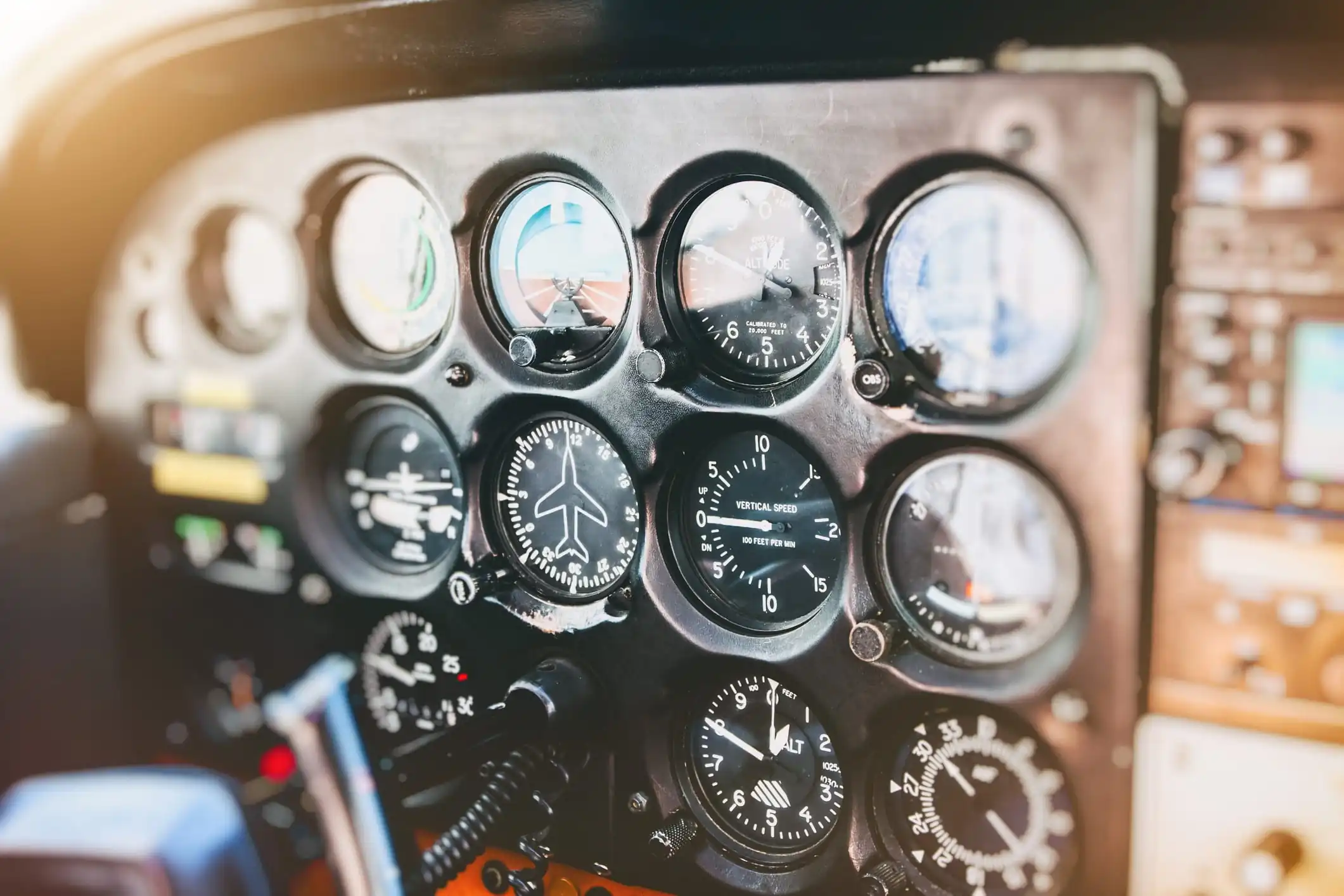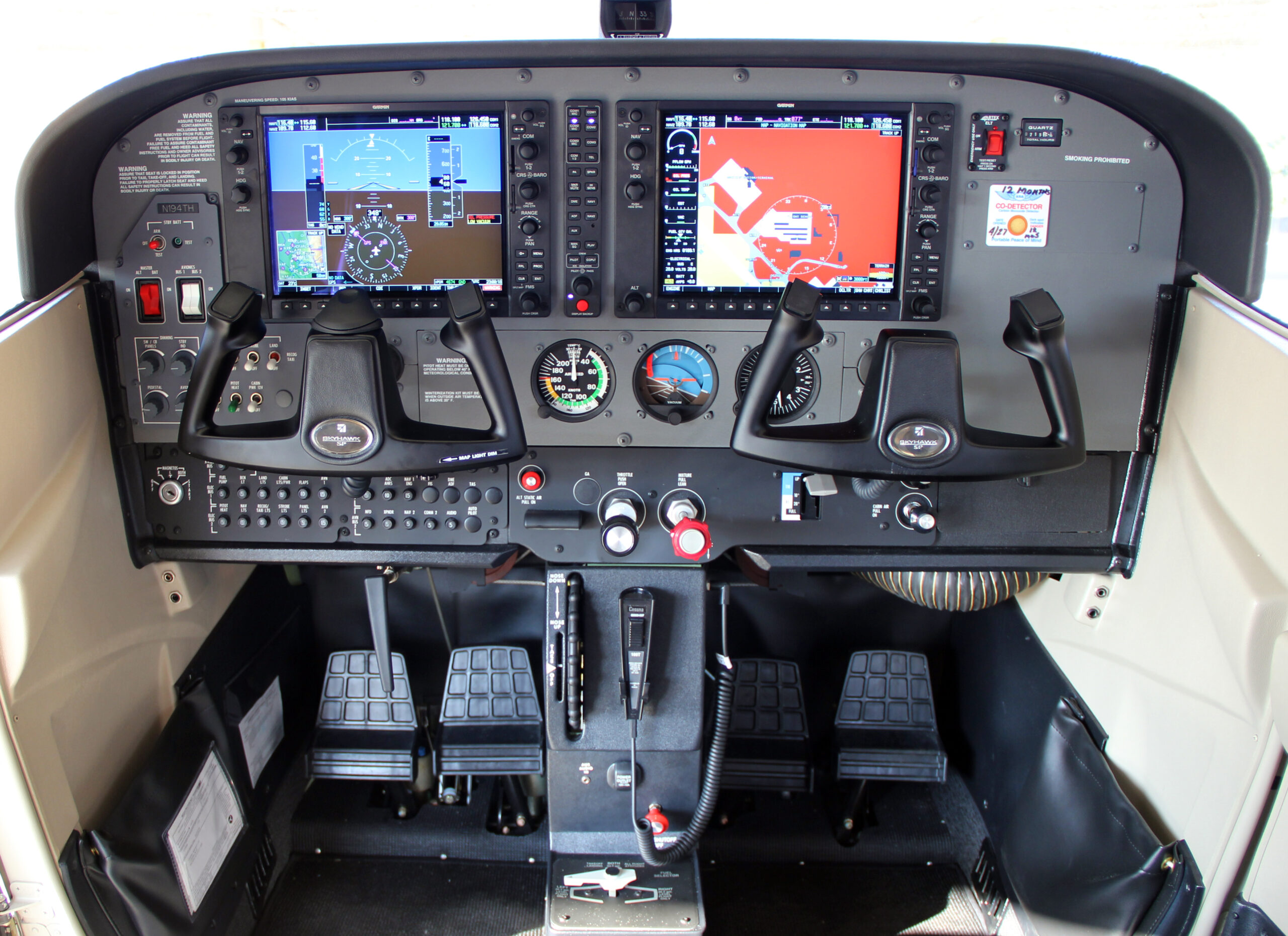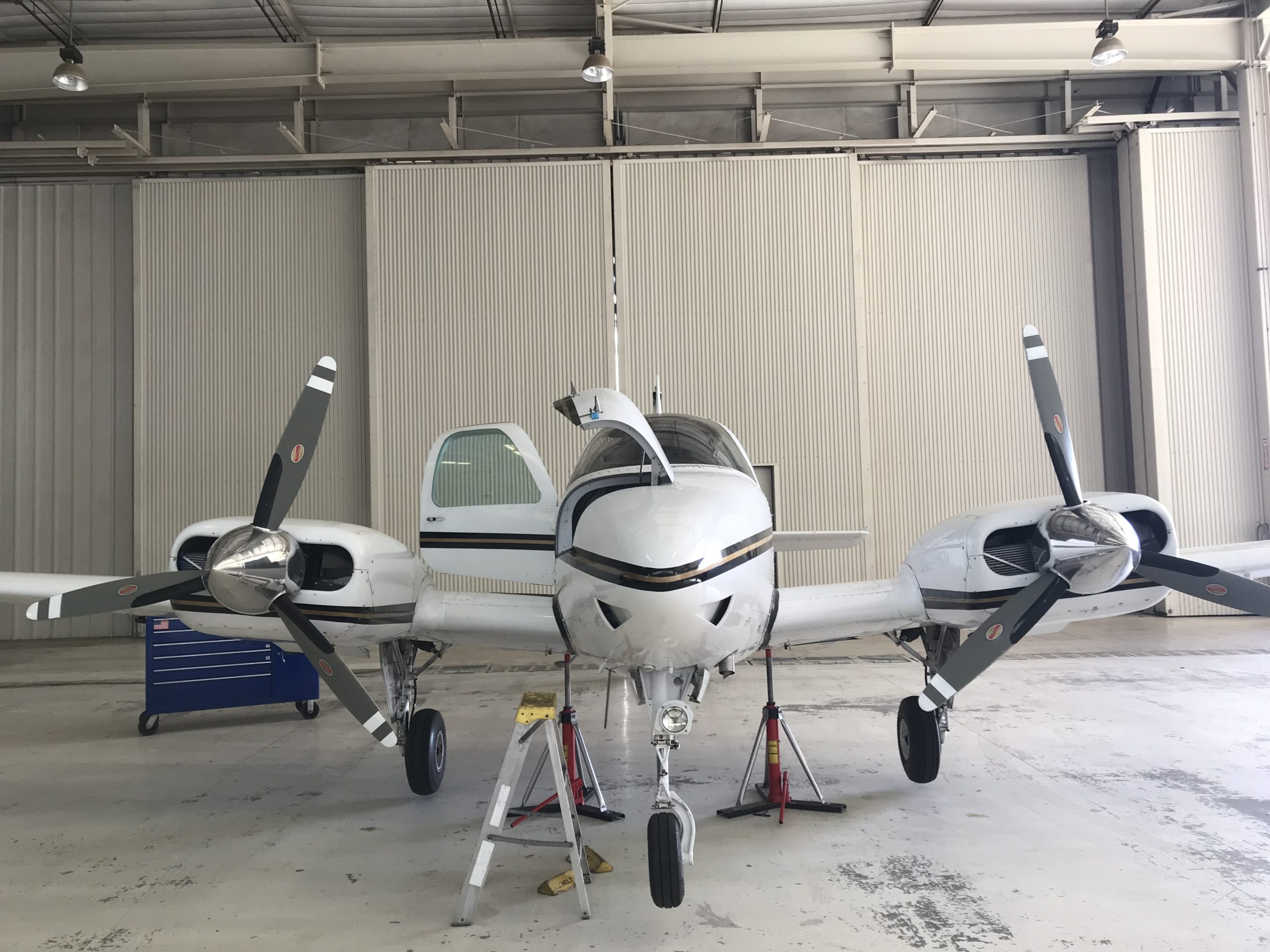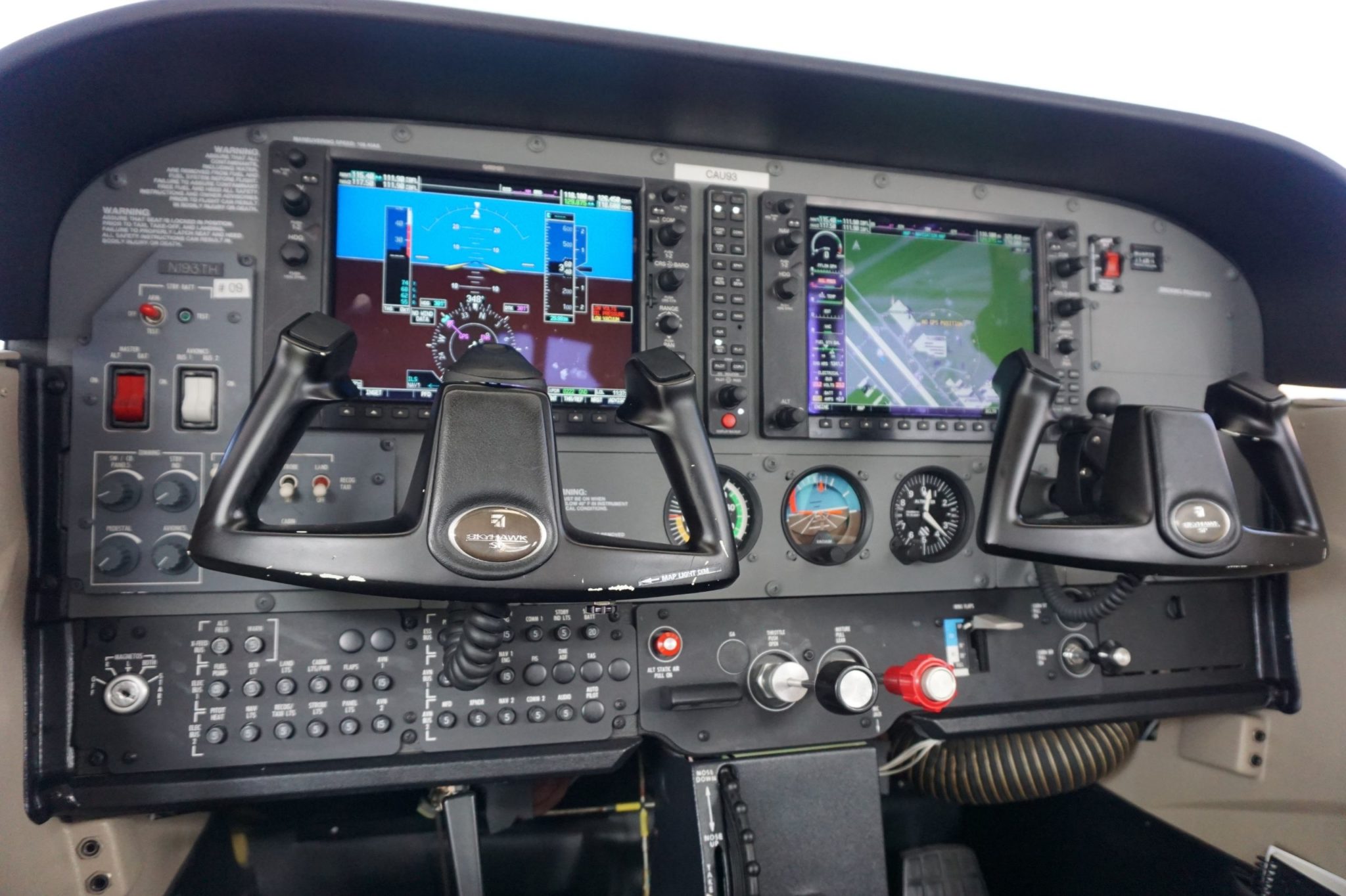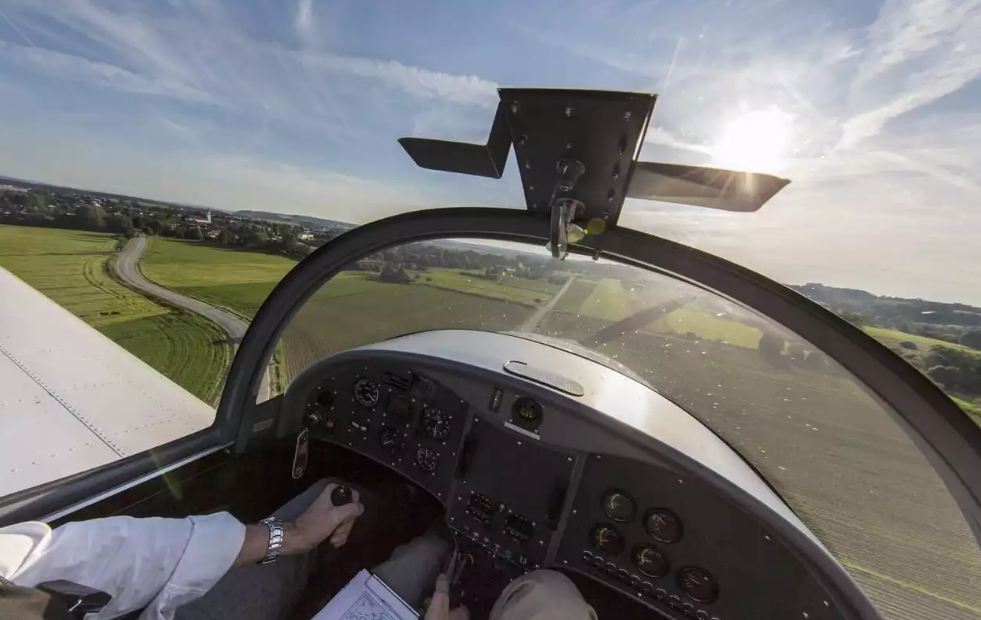Flying above the world when surrounded by blue skies is one thing.
Trying to find your way when you cannot see anything is quite another. Low visibility can require a pilot to rely solely on instruments to handle the aircraft safely.
Known as Instrument Flight Rules (IFR), these regulations provide pilots with the proper procedures for flying under conditions that make it tough to see well. In order to successfully maneuver the aircraft, there are specific instruments required for IFR flights that pilots need to have and be thoroughly trained to use.
Below is a comprehensive guide on IFR flight requisites – and why it is so important to develop the skills necessary to travel in low-visibility situations.
What is an IFR Flight?
When it is cloudy or foggy, pilots rely on the Instrument Flight Rules that are put in place to govern the way they handle their aircraft. These rules state the procedures that need to be followed during low-visibility conditions.
Radio beacons and GPS are two commonly used instruments and navigation equipment that pilots use in IFR. Of course, to learn how to effectively use these tools, pilots have to be trained and certified above and beyond Visual Flight Rules (VFR).
IFR was put in place as a safety measure. Encountering times of low visibility is inevitable so knowing what to do in these situations can keep the pilot and everyone on the aircraft safe. The rules and procedures are clearly stated so that pilots know what they need to do and when they need to do it.
What’s more, flying with IFR rather than VFR means taking more efficient routes. This leads to a reduction in fuel costs and can shorten flight times, too. It is likely the reason IFR flight rules are used throughout commercial aviation.
Requirements for IFR Flight
There are a couple of things you are going to need if you want to fly IFR, including an aircraft that has all the instruments required for an IFR flight, an IFR flight plan, and a pilot with Instrument Ratings to be able to fly the aircraft.
The Proper Aircraft for an IFR Flight
You need the proper aircraft for an IFR flight as you will require the right instruments to be in control when visibility is lacking. Not all aircraft afford pilots this ability. Most aircraft that are not equipped will have a ‘VFR Only’ placard in the cockpit, but just in case, checking the Pilot’s Operating Handbook (POH) is always a good idea.
An approved aircraft will have the instruments required for IFR flight, including:
-
Altimeter
-
Airspeed indicator
-
Tachometer
-
Magnetic direction indicator
-
Fuel gauge indicating the quantity of fuel in each tank
-
Landing gear position indicator, if the aircraft has a retractable landing gear
-
Safety belts
-
Sensitive altimeter adjustable for barometric pressure
-
A clock displaying hours, minutes, and seconds
-
Generator or alternator of adequate capacity
-
Attitude indicator
-
Heading indicator
-
An Emergency Locator Transmitter (ELT)
-
Position Lights
-
Anti Collision Lights
-
At least one landing light (if the aircraft is operated for hire)
-
One spare set of fuses, or three spare fuses of each kind, accessible to the pilot in flight
-
Two-way radio communication and navigation equipment suitable for the route to be flown
-
Gyroscopic rate-of-turn indicator (except for some aircraft)
-
Slip-skid indicator
-
Radios and navigational equipment appropriate to the ground facilities to be used
-
Oil temperature gauge
-
Oil pressure gauge for each engine using a pressure system
-
Temperature gauge for each liquid-cooled engine
-
Manifold pressure gauge for each altitude engine
-
Fuel gauge indicating the quantity of fuel in each tank
-
Landing gear position indicator, if the aircraft has a retractable landing gear
-
Safety belts
-
Gyroscopic rate-of-turn indicator (except for some aircraft)
-
Slip-skid indicator
-
Radios and navigational equipment appropriate to the ground facilities to be used
Believe it or not, navigational equipment such as GPS is not part of the requirements, but it is highly recommended.
An IFR Flight Plan
Anytime a pilot flies an aircraft within a controlled airspace using IFR, they must make it known before they take off. Filing an IFR flight plan is required for safety reasons.
By advising air traffic control, they are now aware of the aircraft’s travel route, altitude, and destination ETA. This enables them to monitor the flight and provide any help along the way that may aid the pilot in staying safe.
When visibility is low, air traffic control needs to keep nearby sky traffic sparse to maintain the highest level of safety for everyone.
A Pilot with Instrument Ratings
To be able to fly using the instruments required for IFR flight, pilots need to obtain the Instrument Rating certification. This will permit them to deviate from only flying VFR.
There is both ground and air training required to obtain this certification and the time for doing so can vary based on a few different factors, such as where you are training, weather conditions, and so on.
The Federal Aviation Administration (FAA) requires pilots to have a minimum number of flight hours under IFR to qualify for the Instrument Rating. However, how the flight hours need to be completed will vary.
Advantages of Getting an Instrument Rating
Plenty of pilots seek to go above and beyond the minimum requirements to become a pilot because they want to know everything possible about having the best overall flight experience.
There are a few advantages to getting an instrument rating, including knowing how to better control the aircraft, especially in times of low visibility. As a pilot, this increases your chances of staying as safe as possible.
Further, having an instrument rating opens the door for additional career options, especially as they pertain to commercial aircraft.
Learn to IFR at CAU
Are you intrigued about the possibility of learning to fly using instruments required for IFR flight rather than relying on vision? CAU’s aviation degree programs provide you with the tools necessary to become a commercial pilot.
Contact us today to learn more.
Ready to soar in your aviation career?
Mr. Matthew A. Johnston has over 23 years of experience serving various roles in education and is currently serving as the President of California Aeronautical University. He maintains memberships and is a supporting participant with several aviation promoting and advocacy associations including University Aviation Association (UAA), Regional Airline Association (RAA), AOPA, NBAA, and EAA with the Young Eagles program. He is proud of his collaboration with airlines, aviation businesses and individual aviation professionals who are working with him to develop California Aeronautical University as a leader in educating aviation professionals.


